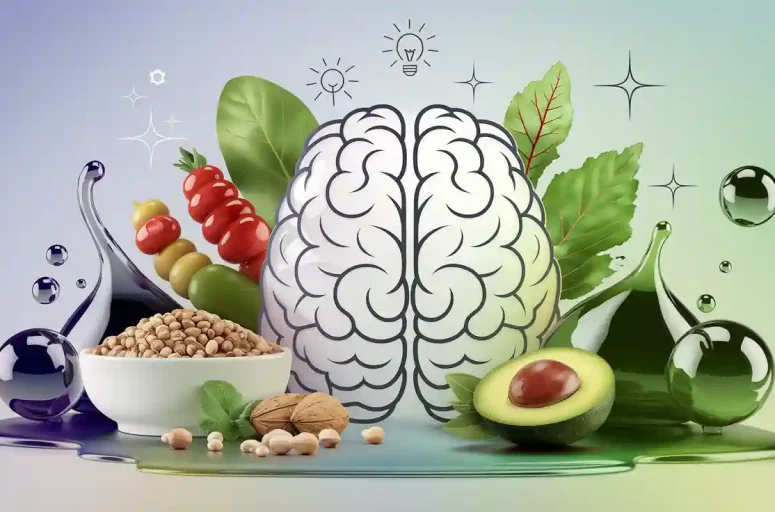
When making a protein powder comparison between plant and whey protein powders, it’s important to understand their differences. Whey protein is derived from milk, which means it’s not suitable for vegans or individuals with lactose intolerance. On the other hand, plant-based protein powders are both vegan and lactose-free, making them an excellent choice for a variety of diets. Typically, both types provide 20–30 grams of protein per scoop. Whey is considered a complete protein, containing all nine essential amino acids, while most plant proteins lack some of these unless they incorporate soy or specific blends. Additionally, whey protein digests quickly, whereas plant proteins take longer to digest due to their fiber content. This protein powder comparison highlights how each type caters to different dietary needs and fitness goals.
Key Takeaways
Whey protein has all nine amino acids. It helps muscles heal.
Plant protein powders are vegan and lactose-free for special diets.
Whey protein works fast after exercise. Plant proteins give steady energy.
Mixing pea and rice proteins makes a full amino acid set.
Plant proteins have extra nutrients like fiber, vitamins, and minerals.
Whey protein isn’t good for lactose-intolerant people. Whey isolate might help.
Plant proteins are better for the planet with less pollution.
Pick a protein powder that fits your diet and fitness goals.
Nutritional Comparison
Protein Content and Quality
Amino acid profile of whey protein
Whey protein is a complete protein. It has all nine essential amino acids. These amino acids, like leucine, help repair and grow muscles. Whey protein has more BCAAs than plant-based protein. This makes it popular with athletes and fitness fans. Its amino acids help muscles recover quickly after exercise. This can help you reach fitness goals faster.
Amino acid profile of plant-based protein
Plant-based proteins may miss some essential amino acids. But blends, like pea and brown rice, can be complete. Studies show these blends can build muscle almost like whey protein. They work about 91% as well as whey over four hours. This makes plant-based protein good for muscle recovery when mixed right.
Macronutrient and Micronutrient Differences
Carbohydrate and fat content
Whey protein powders, especially isolates, have very few carbs and fats. This makes them great for low-carb diets. Plant-based proteins have more carbs and fats from plants. These extra nutrients often include healthy fats and fiber. They can support better overall health.
Additional nutrients in plant-based protein
Plant-based proteins give more than just protein. They have vitamins, minerals, and antioxidants from plants. For example, pea protein has iron, and hemp protein has omega-3s. These extras make plant-based protein a good choice for balanced nutrition. Whey protein focuses on high-quality protein with fewer extras.
Tip: Want a protein powder for overall health? Plant-based options may offer more benefits because of their extra nutrients.
Whey Protein Powder | Plant-Based Protein Powder | |
|---|---|---|
Protein Content | 20–30 grams per scoop | 18–30 grams per scoop |
Complete Protein | Yes | No (except soy or specific mixes) |
BCAAs | Higher content | Lower content |
Lactose-Free | No | Yes |
Vegan-Friendly | No | Yes |
Both whey and plant-based proteins have their own benefits. Choose based on your diet, goals, and needs.
Digestibility and Absorption
Whey Protein Absorption
Fast absorption benefits
Whey protein absorbs quickly, making it popular with athletes. Your body can take in about 10 grams of whey protein per hour. A 20-gram serving is fully absorbed in two hours. This fast absorption helps muscles recover and repair after workouts.
Whey protein raises amino acid levels in your blood within four hours. This quick action makes it great for post-workout recovery. If you need fast muscle support, whey protein is a good choice.
Issues for lactose-intolerant individuals
Whey protein may not work for everyone. People with lactose intolerance might feel bloated or gassy. Whey protein isolate has less lactose and may suit mild cases. Always check the label to match your dietary needs.
Plant-Based Protein Absorption
Slower digestion due to fiber
Plant-based proteins digest slower because they have fiber. This slower process can be helpful. It gives your body nutrients over a longer time. This steady release supports muscle repair and keeps you full longer.
Variability among plant sources
Different plant proteins digest at different speeds. Pea protein absorbs almost as fast as whey but is slightly slower. Hemp and rice proteins take more time to digest. Mixing plant proteins, like pea and rice, improves absorption and amino acid balance.
Note: Choose plant protein blends for better amino acid balance and absorption.
Protein Type | Absorption Rate (grams/hour) | Notes |
|---|---|---|
Whey | 10 | Absorbs fully in 2 hours for 20 grams. |
Pea | Slightly slower than whey | Builds muscle well if leucine is enough. |
Casein | Slow, lasts 4-5 hours | Gives a steady amino acid supply. |
Whey protein absorbs fast, helping quick recovery. Plant protein releases nutrients slowly, aiding long-term repair and fullness. Pick what fits your goals and diet best.
Suitability for Diets and Lifestyles
Vegan, Vegetarian, and Lactose-Intolerant Diets
Benefits of plant-based protein for vegans
If you are vegan or vegetarian, plant-based proteins are a great choice. These powders come from plants like soy, pea, hemp, and rice. They do not have animal products or lactose, so they fit dairy-free diets. Plus, they often include fiber, iron, and omega-3s, which help your health.
Plant-based proteins are also better for the planet. Many people now prefer sustainable and ethical foods. About 31% of people plan to eat more plant proteins soon. Younger groups, like Gen Z, lead this trend. Around 44% of them are okay paying extra for plant-based options.
Whey protein options for lactose intolerance
If you are lactose-intolerant but want whey protein, there are options. Whey protein isolate has very little lactose, so it is easier to digest. It also has less fat and carbs, which helps with weight control.
For severe lactose intolerance, plant-based proteins may be better. They avoid stomach problems and still give you good protein. Always read the label to make sure it fits your diet.
Fitness Goals
Muscle building and recovery
Both whey and plant-based proteins help build and repair muscles. Whey protein works fast and has lots of amino acids like leucine. This makes it great after workouts because it quickly helps muscles recover. Studies show whey raises amino acid levels faster after exercise.
Plant-based proteins can also help muscles grow if blended well. Mixing pea, rice, and other plant proteins gives all amino acids. Research shows these blends work almost as well as whey. For example, a study found 32 grams of plant protein with 2.5 grams of leucine worked like whey for trained people.
Weight loss and satiety
Protein powders can help with weight loss by keeping you full. Whey protein absorbs quickly and reduces hunger after exercise. It also helps keep muscles during calorie cuts, which supports metabolism.
Plant-based proteins are good for weight loss too. Their fiber slows digestion, so you feel full longer. This steady nutrient release helps control hunger and prevents overeating. Choose plant-based powders with low sugar and fat for better results.
Tip: Pick protein powders with fewer calories and no fake additives for weight loss.
Taste and Texture
Flavor Variety and Mixability
Common flavors of whey protein
Whey protein comes in many flavors like chocolate and vanilla. Strawberry is also popular among users. Some brands offer fun flavors like cookies and cream or mocha. Whey protein mixes easily with water or milk. It makes smooth shakes without lumps. Whey concentrate might clump more because it has extra carbs and fats.
Common flavors of plant-based protein
Plant-based protein powders have fewer flavors than whey. Chocolate and vanilla are the most common choices. Some brands add flavors like peanut butter or berry. These powders often taste earthy or nutty because they come from plants. Pea protein mixes better than rice or wheat protein. Plant powders may clump, especially if they have fiber or carbs. A blender or shaker bottle can help make them smoother.
Tip: Whey protein offers more flavors and smoother shakes. Plant-based powders give a natural taste worth trying.
Personal Preferences
Taste preferences for different uses
Your favorite taste depends on how you use protein powder. Whey protein tastes creamy and sweet, great for shakes or smoothies. It blends well with fruits, milk, or nut butter. Plant-based powders work better in recipes like energy balls or baked goods. Their earthy flavor pairs nicely with oats or cocoa. Brands are improving plant powder flavors to avoid bitterness.
Texture differences
Texture matters when choosing protein powders. Whey protein feels smooth and creamy when mixed with liquids. It’s light and easy to drink. Plant-based powders often feel gritty because of their fiber. Some people dislike this texture, but others enjoy its natural feel. Using a blender can make plant powders smoother and more enjoyable.
Note: Whey protein gives a smoother texture. Plant-based powders are a good choice for natural ingredients.
Environmental Impact
Sustainability of Plant-Based Protein
Lower carbon footprint
Making plant-based protein creates less pollution than whey protein. Growing plants like soy and peas uses fewer resources. It also releases less harmful gases into the air. For example, soy protein powders pollute less than whey, which comes from milk. This makes plant-based protein better for the environment.
Studies show plant proteins are more eco-friendly than dairy proteins. Cow’s milk, used for whey, has a bigger carbon footprint than soy drinks. While cow’s milk has more nutrients, soy is more sustainable.
Protein Source | Carbon Footprint | Nutritional Quality (DIAAS) | CFPRO Score |
|---|---|---|---|
Cow’s Milk | Higher | Higher | Lower |
Soy Drink | Lower | Lower | Higher |
Choosing plant-based protein helps your health and the planet.
Renewable plant sources
Plant-based proteins come from crops like soy, peas, and hemp. These plants grow back every season, making them renewable. They also improve soil by adding nitrogen, so farmers need fewer chemicals. This makes plant-based protein good for you and the Earth.
Environmental Concerns with Whey Protein
Dairy farming emissions
Whey protein depends on dairy farming, which harms the environment. Cows release methane gas, which traps heat in the atmosphere. Dairy farms also use a lot of land and water. If you care about climate change, this is something to think about when picking protein powders.
Resource-intensive production
Making whey protein uses a lot of energy and water. It involves separating whey from milk during cheese-making. Transporting and processing whey also adds to its environmental cost. While whey protein is nutritious, it has a bigger impact on the planet than plant-based options.
Tip: Want to help the environment? Choose plant-based protein powders for their lower impact and renewable sources.
Picking between plant-based and whey protein powders depends on your needs. Whey protein absorbs fast and has all essential amino acids. It’s great for muscle recovery and growth. Whey protein isolate, with 90% protein, works for lactose-intolerant people or weight loss. Plant-based protein powders have fiber and nutrients, making them ideal for vegans. They are also a good choice for those who want eco-friendly options. Combining plant proteins gives all amino acids, helping muscles grow and boosting health.
Key Takeaway:
The RDA for protein is 0.8 grams per kilogram of body weight. Your needs might differ.
Both protein powders help with weight loss and muscle building. Pick one based on your lifestyle and values.
Criteria | Whey Protein Powder | Plant-Based Protein Powder |
|---|---|---|
Lactose-free | No | Yes |
Vegan-friendly | No | Yes |
Complete protein | Yes | No (except soy or blends) |
Protein per scoop | Sometimes 20–30 grams | |
Environmental impact | Higher | Lower |
The best protein powder is the one that fits your goals and values.
FAQ
What is the main difference between plant-based and whey protein powders?
Plant-based protein comes from plants like peas or soy. Whey protein comes from milk. Plant-based powders are vegan and lactose-free. Whey protein absorbs faster and has all essential amino acids.
Can you build muscle with plant-based protein?
Yes, you can build muscle with plant proteins. Blends like pea and rice give all essential amino acids. They help muscles grow and recover almost as well as whey protein.
Is whey protein better for weight loss?
Whey protein absorbs fast and reduces hunger after workouts. It keeps muscle during calorie cuts, helping your metabolism. Plant-based protein helps weight loss too by keeping you full longer with fiber.
Are plant-based protein powders suitable for lactose-intolerant individuals?
Yes, plant-based powders are great for lactose-intolerant people. They are naturally lactose-free and avoid stomach problems. Whey isolate may work for mild cases, but plant powders are safer.
Which protein powder is more environmentally friendly?
Plant-based protein is better for the planet. It uses renewable crops like soy and peas. Whey protein relies on dairy farming, which uses more resources and pollutes more.
Do plant-based protein powders taste good?
Plant-based powders often taste earthy or nutty. Brands now offer flavors like chocolate or vanilla. Using a blender can make them smoother and tastier.
How do I choose the right protein powder for me?
Think about your diet, goals, and values. Plant-based protein is good for vegans or lactose-intolerant people. Whey protein works fast for muscle recovery. Check labels to match your needs.
Can I mix plant-based and whey protein powders?
Yes, mixing them is fine. You get whey’s fast absorption and plant protein’s nutrients and fiber. This mix balances nutrition and supports fitness goals.
Tip: Always read the label to ensure the blend fits your diet.



4 comments